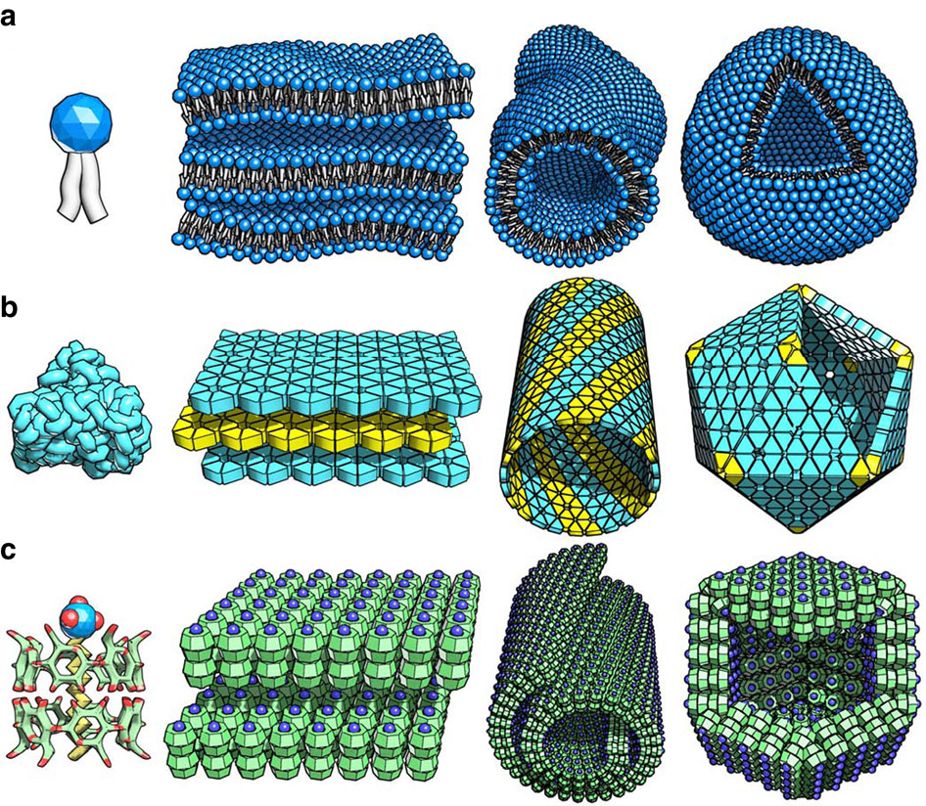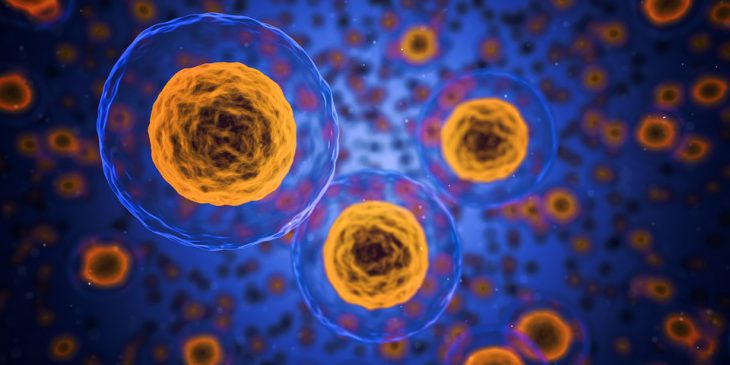How did life emerge on Earth? Were tiny microbes created spontaneously from non-living matter or did some other forces play a role in the creation of life? Such questions have always intrigued researchers. Scientists have been carrying out various experiments that mimic the prebiotic conditions of our planet to see whether components of present day cells can develop naturally in such conditions, with the aim to find out more about the origin of life on Earth.
Proteins are an important component of cell membranes. They help in sustaining the structure and functionality of the membrane. The processes of membrane assembly and peptide synthesis (the formation of long chains of amino acids) developed at the same time during the early history of life on Earth. Studying this relationship between proteins and membranes can help us unravel the mystery of the formation of the predecessors of cells on the early Earth, called protocells. More specifically, a protocell is a self-organized spherical collection of non-living components which is considered to be a stepping-stone for life on Earth.
In a paper by researcher Sudha Rajamani and her team from the Indian Institute of Science Education and Research, it has been shown that vesicles can form spontaneously from non-living components under specific conditions. Vesicles are extremely important components of cells as they aid cellular life processes like digestion, storage, packaging, transport and cell communication. This experiment created wet-dry cycles (alternate exposure to wet and dry environments) at high temperatures.

Ways that lipids and proteins assemble into complex 3d shapes in nature! Source: Wikimedia Commons
Features like wet-dry cycles and high temperatures would have been common on the prebiotic Earth around specific geochemical locations, such as terrestrial hot springs and hydrothermal vents. Scientists consider these locations to be highly probable settings for the origin of life on Earth. Amphiphiles, which are molecules containing a hydrophilic head region and a hydrophobic tail region, can affect the peptide-synthesis process in a number of ways. They assemble into vesicles and aid peptide formation. They also interact with amino acids and generate new molecules which have properties of both amphiphiles and amino acids. Phospholipids, which are a type of amphiphile, constitute the main components of cell membranes.
In this study, the scientists carried out an experiment with phospholipids and non-activated amino acids. A non-activated amino acid is an amino acid which is not bound to its transfer RNA. Previous research used activated amino acids which would not have been found in early Earth environments. First, a specific phospholipid was made to react with the amino acid glycine. Different proportions of this phospholipid and glycine were exposed to 5 wet-dry cycles at 90°C. Each cycle lasted 24 hours. The researchers chose the temperature of 90°C because it is similar to temperatures found in terrestrial hot springs, and the heat provides the necessary energy required for the process.
After analyzing the products of the experiment, the researchers found that two competing reactions occur simultaneously in this process, forming peptides and N-acyl amino acids. Only one of the two reactions were interesting to the researchers. The first, less important reaction was glycine combining with another glycine. The second reaction, however, produced specific kinds of N-acyl amino acids. These products have many interesting properties, including the ability to assemble into vesicles.

What a cell membrane looks like zoomed waaay in! Source: Wikimedia Commons
The scientists further reported that the N-acyl amino acid synthesis reaction also occurred with other phospholipids and with several other amino acids, such as alanine and valine. They also observed that the amino acids formed are able to self-assemble into vesicles under acidic conditions. In addition to pH, the temperature of the system also plays a crucial role in fatty acid vesicle formation. Fatty acids assemble into vesicles only above their chain-melting temperature. Below this temperature, they form crystals. N-acyl amino acids also show a similar temperature-dependent behavior. However, since the temperature of the Earth before life began was much higher than it is today, this phenomenon would not have affected the process and the fatty acids would have stayed in the vesicle form.
N-acyl amino acids, fatty acids and amphiphiles were present in large quantities on the prebiotic Earth. These components are together designated as “protoamphiphiles”. Protoamphiphiles are a group of amphiphiles which were prevalent on Earth before life began. Scientists believe protoamphiphiles served as components of membranes in primitive cells on the early Earth. This study has shown that protoamphiphiles can be synthesized without the use of activated amino acids or any external activating agent. These findings are in accordance with the theory that life arose through natural processes from non-living matter. Although it cannot be confirmed at this point that this is the only mechanism through which life emerged, the researchers conclude that these findings definitely provide some valuable clues to the origin of life on Earth.


